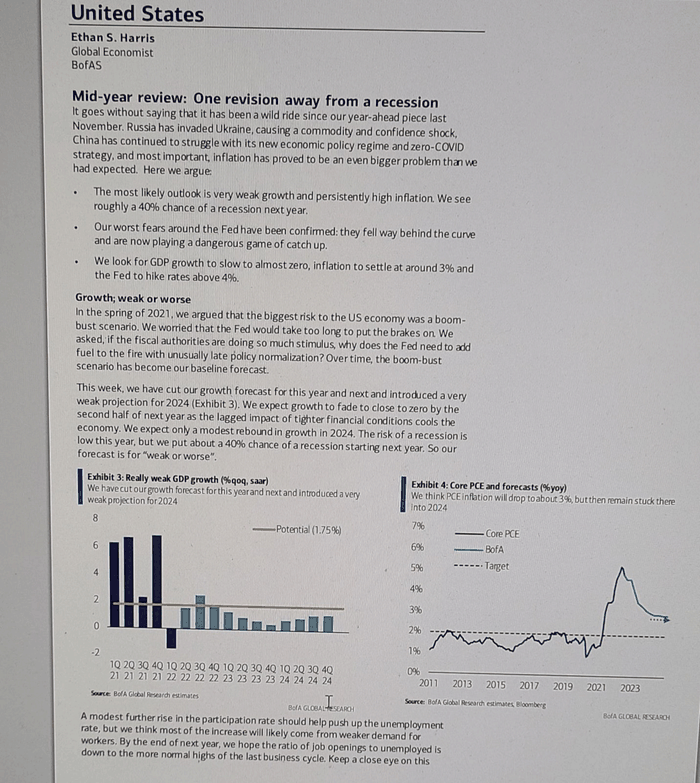The review may be smarter than the book.
From American Affairs Journal, Summer 2022 / Volume VI, Number 2:
REVIEW ESSAY
Restarting the Future:
How to Fix the Intangible Economy
by Jonathan Haskel and Stian Westlake
Princeton University Press, 2022, 330 pages
What’s wrong with the new economy, variously called the knowledge economy or the information economy? Jonathan Haskel and Stian Westlake’s Restarting the Future, published this spring by Princeton University Press, diagnoses post-2008 Western economic stagnation as the consequence of a massive but incomplete shift away from an economy characterized by investment in “tangibles” to one characterized by investment in “intangibles.” Intangibles, pedantically, are things you can’t touch, but here encompass intellectual property (patents, copyrights, brands, and trademarks), corporate cultures, consumers’ emotional attachments to firms or products, and tacit production knowledge. Tacit knowledge is uncodified—often uncodifiable—information about how things get done on the factory or office floor that is stored in workers’ heads.
Haskel and Westlake accurately identify five forms of contemporary dysfunctionality: (1) Stagnant per capita income growth relative to pre-2010 growth rates. (2) Rising inequality, not just of wealth and income but also of esteem as cultural and social change accelerates and magnifies the divide between high-status elites and everyone else. (3) Dysfunctional, winner-take-all competition that inhibits start-ups and promotes excessive interpersonal competition over positional goods and employment outcomes. (4) The fragility of very complex, interconnected international supply chains, which are vulnerable to shocks like Covid or war, or, given very low interest rates, increasingly ineffective monetary policy in the face of a significant recession. (5) And finally, echoing Fight Club, where everything is a copy of a copy of a copy, inauthenticity: the sense that too many jobs and activities are simply fake and detached from any underlying reality.
Haskel and Westlake channel Italian Marxist Antonio Gramsci, declaring that “[t]he problems we see are the morbid symptoms of an economy caught between an irrecoverable past and the future that we cannot attain.” The institutions we have don’t match the institutions that an economy built on intangibles needs. Economies, they say, require institutional structures that are specifically compatible with what we can call, following Joseph Schumpeter, the “current leading sectors.” Those “sound institutions have to solve four problems in exchange: ensuring sufficient commitment, solving collective action problems, providing information, and restricting wasteful influence activities.” In particular, Haskel and Westlake foreground—without much credit to Schumpeter—Schumpeter’s argument that established interests and practices hinder efforts by new leading sectors to mobilize massive volumes of capital for investment.
But the authors fail to account for how major interests within the intangibles sector currently impede investment and growth under existing legal and economic arrangements. Indeed, this is perhaps the most significant dynamic affecting the performance of the sector and the economy more generally.
Intangibles and Institutions
Haskel and Westlake begin by dismissing four competing explanations for current institutional dysfunction. We are not in an era of technological stagnation, as Robert Gordon has argued. We are not mismeasuring GDP growth on account of the rise of freemium software or internet-based services, even though GDP accounting was built for an era largely characterized by physical output. We might well be in a transitional era as firms seek to understand and implement the production of intangibles, and with higher proportions of intangible inputs—just as an earlier generation struggled to implement electrification of production—but if we are, we are more than halfway through that transition. And finally, though much less convincingly, rising monopoly power has not led to rising markups once intangibles are “properly” accounted for—a point I will return to in detail later.
Haskel and Westlake’s argument about institutional incompatibility with an intangibles economy builds on their 2016 book Capitalism without Capital.2
Capitalism without Capital argued that intangible capital generates four novel “S”s: (1) spillovers: the fact that intangibles or knowledge tend to spread to other firms; (2) scalability: the ability to expand production without a corresponding increase in physical capital; (3) sunken-ness: the inability to extract capital invested in an intangible because of the difficulties involved in selling “information”; and (4) synergies: the ability to combine knowledge to attain greater output.
Restarting the Future argues that institutional failure to deal with spillover effects and sunk costs inhibits growth-generating investment in intangibles. On the demand side for investment capital, if firms cannot capture the majority of the social value their products create for the rest of the economy, why would they invest in those products? On the supply side for investment capital, the world of debt finance is largely closed to firms which deal in intangibles, as those firms typically have no collateral to back a loan or bond. Failed start-ups have only vaporware ex ante, while the already sunk investments of more established intangibles firms, claim Haskel and Westlake, cannot be liquidated in case of default. By contrast, normal banking and securities market channels could finance investment in the older, factory-based tangible economy of the post-1945 era. Tangibility provided collateral—buildings and machines—and loan covenants largely prevented asset stripping in anticipation of default.
Restarting the Future also argues, correctly, that incumbent homeowners, risk-averse local government, and—especially in the United States—racially motivated zoning laws have led to extremely expensive housing costs in the cities which typically host dynamic intangibles firms. Relative to household formation, and sometimes in an absolute sense, most rich countries have built fewer new housing units in the past twenty years than they did in the 1950s through 1970s. This institutional bias toward the housing status quo has slowed expansion, again inhibiting growth.
Finally, Haskel and Westlake note that some institutional supports for an intangibles economy already exist, which is why the weight of intangibles has been rising. Venture capital funds some intangibles production precisely because of scalability. Scalability enables a successful intangibles firm to rapidly expand its output with little extra investment—the “production” cost of the nth copy of software is essentially zero, while app firms can accommodate extra customers with incremental increases in rented server space.
Likewise, the proliferation of smartphones makes those apps synergistic: mapping apps locate a restaurant, ratings apps tell you if it is any good, delivery or rideshare apps connect you and the food. In many cases, winner-take-all dynamics enable a successful firm to have a global-scale addressable market. But, Haskel and Westlake argue, the volume of intangibles production in the economy has exhausted the available institutional capacity, hobbling further expansion.
Monopoly Matters
The authors are surely correct that the current institutional structure inhibits rapid growth, slows the diffusion of productivity gains, and creates unhealthy winner-take-all dynamics. Legacy institutional structures, however, do not cause these problems. On the contrary, firms built on intangibles massively contribute to the four problems the authors identify.
The intangibles firms which capture most of U.S. and global profit volume are rich in intellectual property rights (IPRs).3 IPRs convey monopoly rights, albeit theoretically temporary ones. These monopoly rights generate the dysfunctional and predatory behavior that Haskel and Westlake decry in Restarting the Future precisely because of the characteristics which they elaborated in Capitalism without Capital. But the authors largely deny that monopoly matters, despite advocating for marginal reforms to IPRs. Haskel and Westlake thus miss the degree to which “The calls are coming from inside the house.”
Easy scalability combined with IPR protections implies strong tendencies towards monopoly, especially for first movers. These monopolies have proven hard to dislodge. Haskel and Westlake deny that monopoly is harmful and denigrate what they call “hipster” antitrust policy. From a Schumpeterian perspective, the former argument has some theoretical merit. Schumpeter thought nascent leading sectors needed the promise of monopoly profit both to attract funding and to overcome the barriers that existing businesses posed—Haskel and Westlake’s third institutional problem, excessive influence activity by incumbents.
As
the decidedly Schumpeterian Peter Thiel, who helped found PayPal and
Meta (née Facebook), wrote, every firm desiring prosperity should seek
monopoly.5
But incumbents from the old economy and the robust antitrust regime
associated with it are not the problem. Rather, Haskel and Westlake’s
intangibles firms are.
Haskel and Westlake dismiss the significance of monopoly by pointing to James Traina’s work suggesting that the rising markups found in other academic studies, particularly by Jan De Loecker and Jan Eeckhout, are illusory.6 Traina argues that the apparent rise in markups disappears once sales and general administrative (SGA) expenses are incorporated as part of the cost of production. Haskel and Westlake see these costs as part of firms’ intangibles. But SGA can also be understood as managerial diversion of potential profit away from owners and toward insiders. Private equity similarly siphons off profit through dividend and interest payments, diminishing the apparent scale of monopoly profit and hobbling investment because these firms are not included in the data both Traina and DeLoecker and Eeckhout use.7 In other words, the scale of monopoly profit is occluded and hidden by this process....
....MUCH MORE

